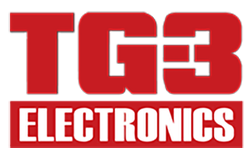
TG3 Electronics
TG3 Electronics is a leading provider of specialized keyboards for the medical and mobile data industries. With a strong focus on industry-specific products, TG3 stands out from competitors by delivering tailored solutions to meet the unique needs of its customers. Headquartered in Southeastern Wisconsin with global manufacturing facilities, TG3 efficiently serves both domestic and international markets. The company's US-based manufacturing site enables it to offer TAA-compliant products, ensuring compliance with the requirements of customers who prioritize this certification.
Computer Mouse, Trackballs
Results:
4
Series
Interface
Type
Results remaining:4
Applied Filters:
TG3 Electronics
About Computer Mouse, Trackballs
This product category encompasses a range of user interface devices specifically designed for 2-dimensional directional input, primarily used for navigating graphical user interfaces (GUIs) commonly found in desktop computing environments. These devices serve as input mechanisms to interact with software applications, allowing users to control and navigate through various graphical elements displayed on a screen. Included within this category are both finished goods products that are ready for consumer use and modular products intended to be assembled as components of larger systems. Finished goods products typically consist of standalone input devices, such as computer mice or trackballs. These devices are ergonomically designed to fit comfortably in the user's hand and provide precise control for moving a cursor or pointer on the screen. They usually feature buttons or touch-sensitive surfaces that enable additional functions, such as selecting or dragging objects. Modular products, on the other hand, are designed to be integrated into larger systems or customized setups. Examples of modular user interface devices include touchpads, which can be embedded into laptops or other portable devices, and joystick modules, which can be incorporated into gaming consoles or specialized control panels. These modular components offer flexibility in terms of placement and can be tailored to suit specific user requirements or system configurations. In both cases, these user interface devices rely on various technologies to facilitate their functionality. Optical sensors, laser tracking, or mechanical mechanisms are commonly used to detect and translate the user's physical movements into corresponding cursor or pointer movements on the screen. Some devices also incorporate additional features like scroll wheels, gesture recognition, or pressure sensitivity to enhance user interaction and productivity. Overall, products in this category play a crucial role in enabling users to navigate graphical user interfaces efficiently and intuitively. Whether as standalone devices or modular components, they provide precise and responsive 2-dimensional directional input, enhancing user experience and productivity in desktop computing environments.



